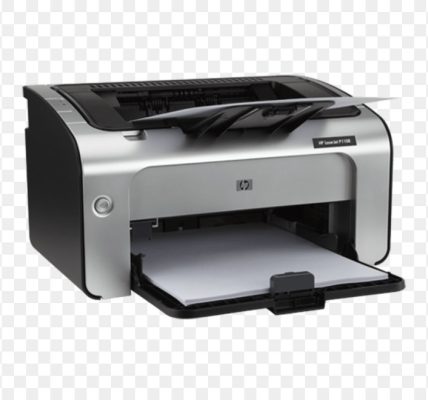Designing an elevator is a complex task that involves numerous considerations to ensure safety, efficiency, and comfort. Whether for a residential building, a commercial complex, or a skyscraper, the design process must be meticulously planned and executed. This guide covers the essential steps and considerations for designing an elevator.
1. Understanding the Requirements
Building Type and Usage
The first step in designing an elevator is to understand the type of building and its usage. Residential elevators have different requirements compared to commercial or industrial elevators. High-rise buildings need faster and more robust elevators than low-rise buildings.
Capacity and Speed
Determine the maximum capacity and speed of the elevator. Capacity is typically measured in terms of the number of people or the weight it can carry, while speed is measured in meters per second (m/s) or feet per minute (fpm). High-rise buildings often require high-speed elevators to reduce travel time.
2. Selecting the Elevator Type
Traction Elevators
Traction elevators are suitable for high-rise buildings. They use ropes and counterweights to move the elevator car. Traction elevators can be further classified into geared and gearless types, with gearless being more efficient and suitable for very tall buildings.
Hydraulic Elevators
Hydraulic elevators are common in low- to mid-rise buildings. They use a hydraulic ram to move the car. While they are slower than traction elevators, they are cost-effective and require less maintenance.
Machine Room-Less (MRL) Elevators
MRL elevators are a popular choice for buildings with limited space. They do not require a separate machine room, as the machinery is located within the elevator shaft.
3. Designing the Elevator Shaft and Machine Room
Shaft Dimensions
The elevator shaft must be designed to accommodate the elevator car, counterweights, and guide rails. Ensure there is enough clearance around the car for maintenance and emergency evacuations. The shaft dimensions depend on the type and capacity of the elevator.
Machine Room
For traction and hydraulic elevators, a machine room is necessary to house the motor, control system, and other mechanical components. The machine room should be easily accessible and well-ventilated. MRL elevators eliminate the need for a separate machine room, which can be beneficial for space-constrained buildings.
4. Ensuring Safety and Compliance
Safety Standards
Elevators must comply with local and international safety standards, such as the American Society of Mechanical Engineers (ASME) A17.1 or the European EN 81 standards. These standards cover various aspects, including emergency brakes, fire safety, and load capacity.
Emergency Systems
Incorporate emergency systems such as alarms, intercoms, and emergency lighting. Ensure there is a provision for manual rescue operations in case of power failure or mechanical issues.
Regular Inspections and Maintenance
Design the elevator with easy access for regular inspections and maintenance. This includes features like inspection hatches and maintenance platforms.
5. Enhancing User Experience
Interior Design
The interior of the elevator car should be aesthetically pleasing and comfortable. Use durable materials that are easy to clean and maintain. Consider adding mirrors, handrails, and non-slip flooring for added safety and comfort.
Lighting and Ventilation
Good lighting and ventilation are essential for a comfortable ride. LED lighting is energy-efficient and provides adequate illumination. Ventilation fans or air conditioning systems can improve air quality inside the car.
Accessibility Features
Design the elevator to be accessible for people with disabilities. This includes features like wide doors, low placement of control panels, Braille buttons, and audible floor announcements.
6. Implementing Advanced Technologies
Smart Controls
Modern elevators are equipped with smart controls that optimize performance and energy efficiency. These systems can learn usage patterns and adjust the elevator’s operation accordingly.
Destination Control Systems (DCS)
DCS improves efficiency by grouping passengers going to the same floor, reducing travel time and energy consumption. Passengers select their destination floor before entering the elevator, and the system assigns them to the most appropriate car.
Energy-Efficient Systems
Incorporate energy-efficient technologies such as regenerative drives, LED lighting, and standby modes. Regenerative drives can convert the elevator’s kinetic energy into electrical energy, which can be fed back into the building’s power grid.
7. Cost Considerations
Initial Costs
The initial cost includes the price of the elevator system, installation, and any necessary modifications to the building structure. Traction elevators are generally more expensive than hydraulic ones, and MRL elevators can save costs on space but might be costlier initially.
Operating Costs
Consider the operating costs, including energy consumption, maintenance, and repairs. Energy-efficient systems and smart controls can reduce long-term operating costs.
Maintenance and Upgrades
Plan for regular maintenance and future upgrades. Elevators are long-term investments, and keeping them in good working condition is crucial for safety and performance.
8. Collaboration with Professionals
Architects and Engineers
Collaborate with architects and structural engineers to ensure the elevator design integrates seamlessly with the building’s design. Structural engineers can help ensure the shaft and machine room are structurally sound.
Elevator Manufacturers
Work closely with elevator manufacturers to choose the right system and customize it according to your needs. Manufacturers can provide valuable insights into the latest technologies and best practices.
Conclusion
Designing an elevator is a multidisciplinary task that requires careful planning and collaboration. By understanding the requirements, selecting the appropriate type, ensuring safety and compliance, enhancing user experience, implementing advanced technologies, considering costs, and collaborating with professionals, you can design an efficient, safe, and comfortable elevator. This comprehensive approach will ensure that the elevator meets the needs of the building and its occupants, providing reliable service for years to come.





